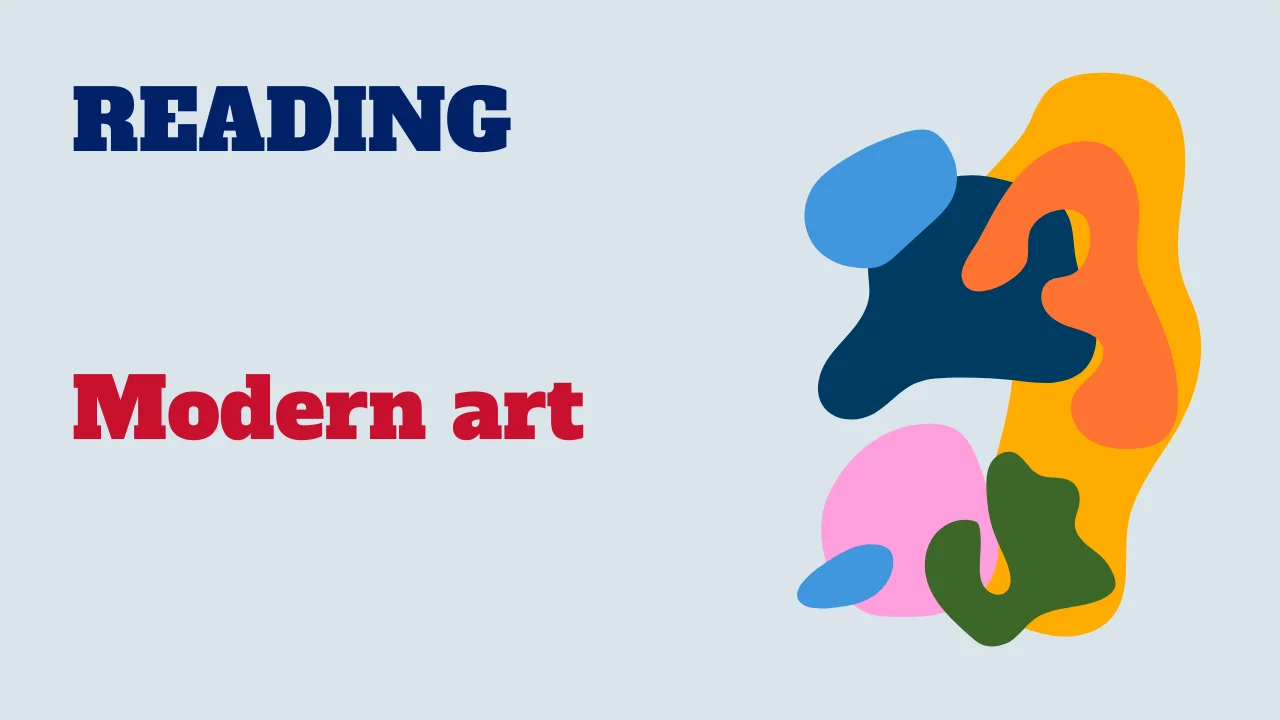Welcome to an exploration of modern art, a transformative period in artistic history that spans roughly from the 1860s to the 1970s. In this reading activity, we’ll uncover the styles, philosophies, and key figures that defined the era of modern art.

From the rejection of traditional norms to the embrace of experimentation, modern artists revolutionized the art world and paved the way for contemporary and postmodern expressions.
Text: Modern art
Modern art, a revolutionary movement spanning roughly from the 1860s to the 1970s, challenged traditional artistic conventions. It wasn’t just about creating beautiful paintings or realistic sculptures; it was a rebellion against the past, a daring exploration of new forms and ideas.
Gone were the detailed portraits and historical scenes that dominated earlier eras. Modern artists embraced experimentation, prioritizing self-expression and pushing the boundaries of what art could be. This resulted in a diverse array of styles, each a unique lens through which artists viewed the world.
Impressionism, for instance, captured fleeting moments and the play of light, with artists like Monet and Renoir using loose brushstrokes and vibrant colors. Post-Impressionism, led by van Gogh and Cézanne, explored form and structure, distorting perspective to convey a deeper emotional resonance.
The 20th century saw an even bolder departure from tradition. Cubism, pioneered by Picasso and Braque, shattered the illusion of three-dimensionality, presenting fragmented objects from multiple viewpoints. Abstract Expressionism, championed by Pollock and Rothko, emphasized the artist’s emotional process, using large canvases and unconventional techniques to create powerful, abstract forms.
Modern art wasn’t always easy to understand. It forced viewers to question their assumptions about art and engage with the work on a deeper level. This wasn’t passive consumption; it was an active conversation between the artist and the audience.
The legacy of modern art is undeniable. It paved the way for contemporary art movements and continues to influence artists today. It challenged the very definition of art, proving that beauty and meaning could be found in unconventional forms. More importantly, it showed us the power of experimentation and the importance of pushing boundaries to create something truly new and thought-provoking.
Comprehension questions
Congratulations on completing the exploration of modern art! By examining the styles, influences, and key figures of the modern art movement, we gain insight into its revolutionary impact on the art world. Remember to continue exploring and appreciating the diverse expressions of artistic creativity as we navigate the ever-evolving landscape of contemporary art.



